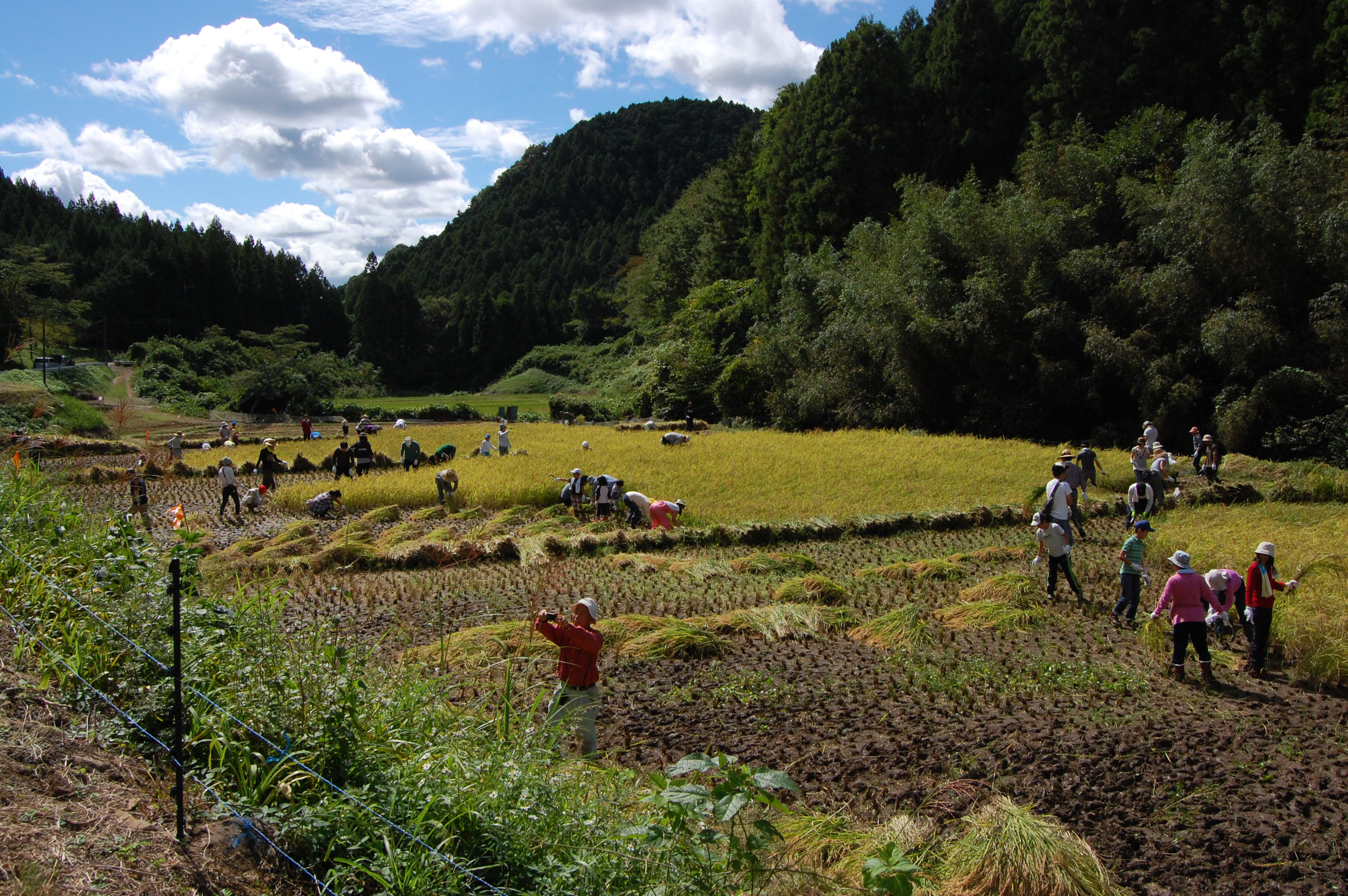The instrument I was given to harvest sake rice was a small sickle, about 20 cm in length, with a thin, curved blade and a serrated edge. It was, essentially, the agricultural equivalent of a pair of children's scissors: If used improperly, you could nick yourself badly but were unlikely to do great harm. However, it was a lightweight and startlingly efficient tool, able to slash through a cluster of sticky, green rice stalks in seconds.
It was my second visit to the rice fields, and the change in the landscape was surprising. I'd made the trek out to Tochigi Prefecture in May to participate in the first installment of the Karasuyama Taiken program (www.karasuyama-taiken.jp), a three-part series of events that begins with rice planting and ends with sake making at Shimazaki Shuzo. At that time, the paddies had been flooded flat, and we'd left them dotted with slender blades of grass. The fields had since turned a golden green, and the stalks grazed our knees. The tadpoles that had populated the muddy water had grown into fat frogs (much to the delight of the children, who made sport of capturing them).
"We're lucky with the weather today. We thought the typhoon might hit," said brewery president Kenichi Shimazaki, shielding his eyes from the sun.



















With your current subscription plan you can comment on stories. However, before writing your first comment, please create a display name in the Profile section of your subscriber account page.